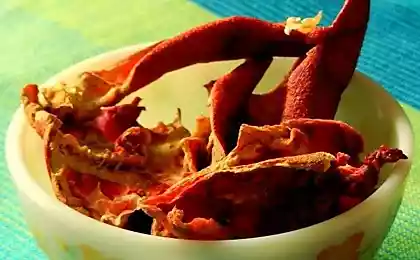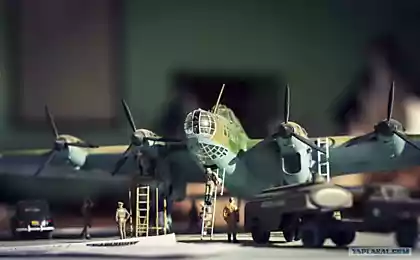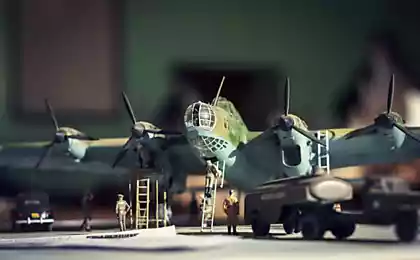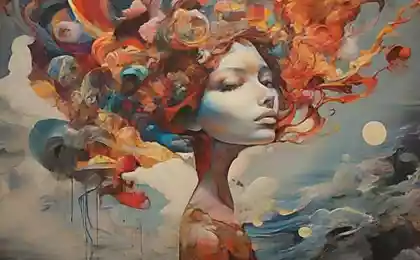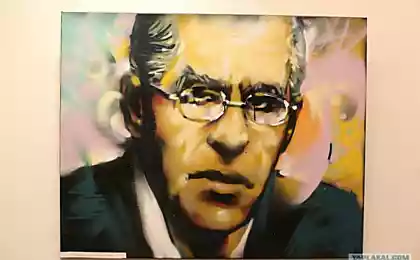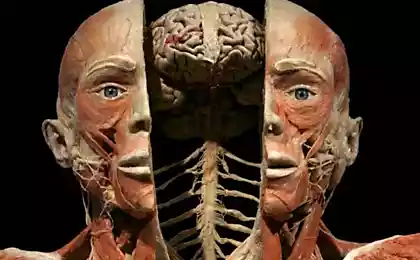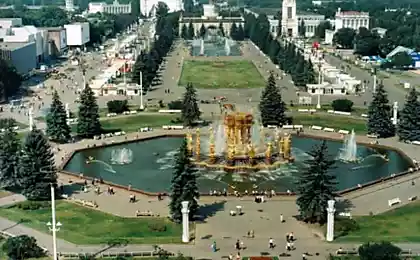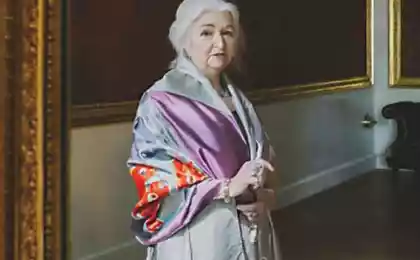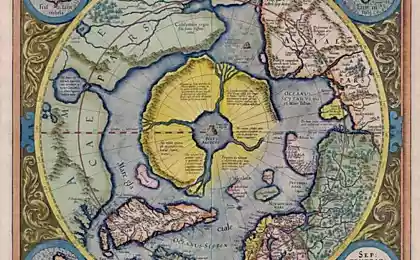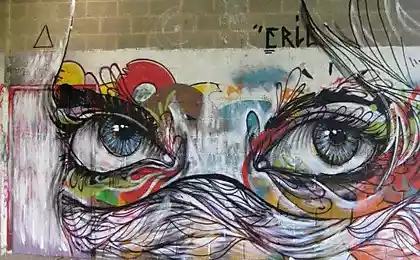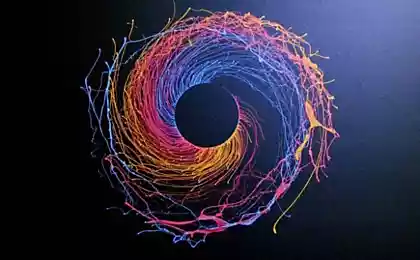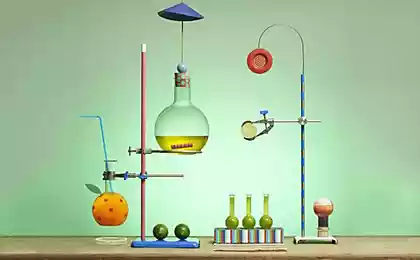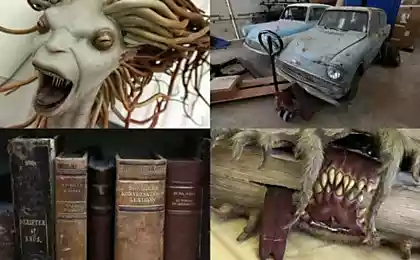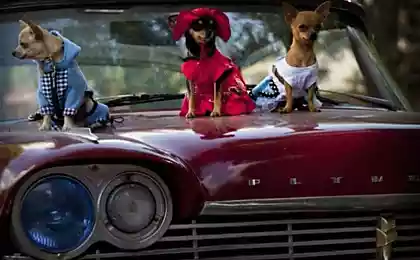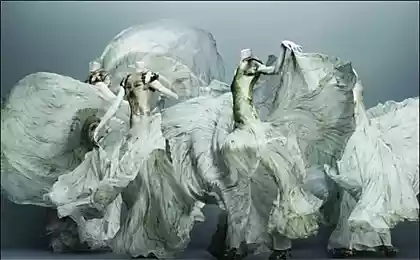811
The exhibition "Art in Science"
The theme of the fourth annual photo competition-exhibition "Art in Science» (Art of Science), organized by Princeton University, was the energy. The competition featured more than 115 works, whose authors were students, graduates and employees of the university. Competition shots are somehow connected with the research. The best works by authors who received token cash prizes, were selected both for their scientific interest, as well as for aesthetic qualities.
16 photo + letter
1. The first place and a prize of $ 250 was gone, Jerry Ross - the researcher laboratory of Princeton - for his portrayal of "Xenon Plasma Accelerator." In this photo visible plume of an engine galvanomagnetic effects (Hall effect), which uses electric and magnetic fields for ionization and acceleration of the engine. (Jerry Ross / Princeton University Art of Science Competition)
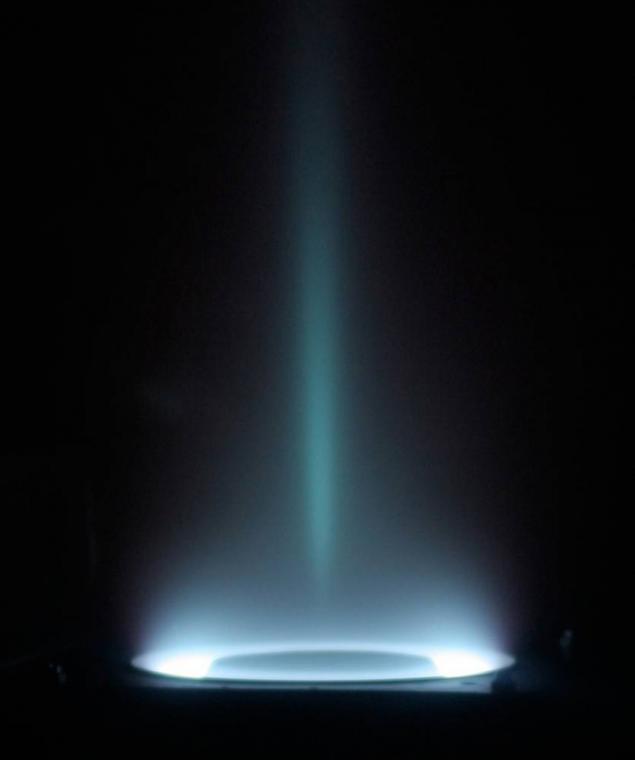
2. Chemical unit graduate of Princeton University, David Naguib called "therapeutic illumination", took second place, and its author received the prize in the 154, $ 51. This device mimics photosynthesis for the production of drugs and other essential substances. "Our project illustrates the experimental studies using energy-saving compact fluorescent light bulb to produce different color photos catalysts" - says Naguib. (David Nagib / Princeton University Art of Science Competition)
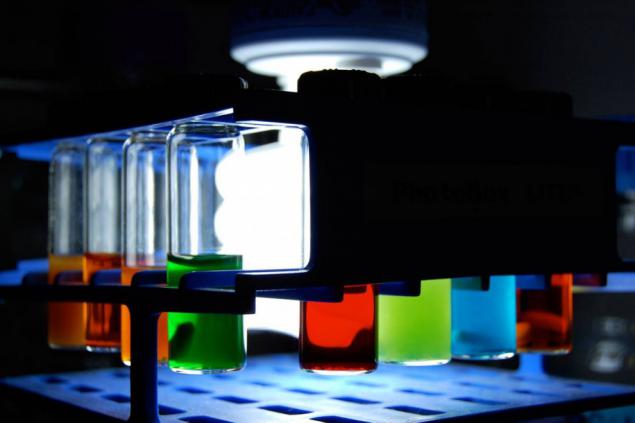
4. This image shows the disordered structure of the material that blocks light over a transparent bandwidth. It also shows the electric field pattern for the electromagnetic waves propagating through the network with a frequency below an unacceptable level. The researchers argue that these materials can be used to collect and convert energy. Authors Image - students at Princeton University Marian Florescu, Paul Steinhardt and Salvatore Torkato. (M. Florescu, P. Steinhardt, S. Torquato / Princeton University Art of Science Competition)
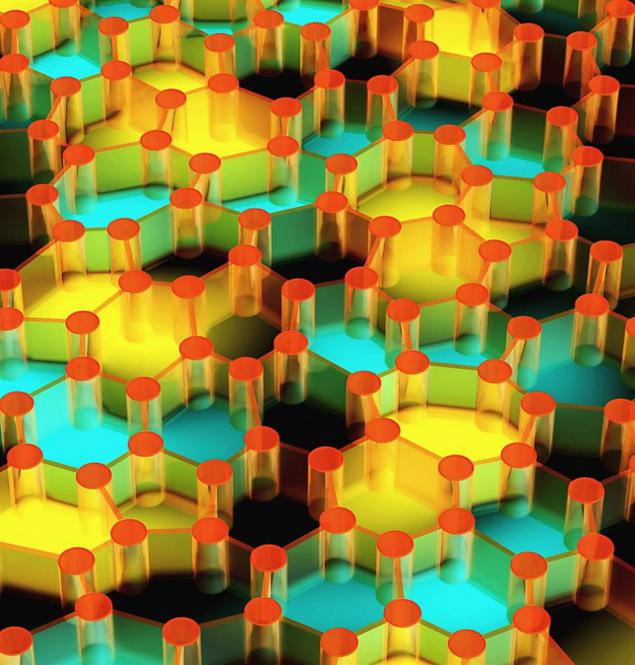
5. Image Craig Jacobson was created as part of the calibration of the spectrometer systems for Thomson scattering on lithium installation "Tokamak" in the laboratory of the university. This diagnostic is used to measure the temperature and density of electrons in the plasma equipment, including the experimental equipment of fusion energy. The colors represent the light intensity. (Craig Jacobson / Princeton University Art of Science Competition)
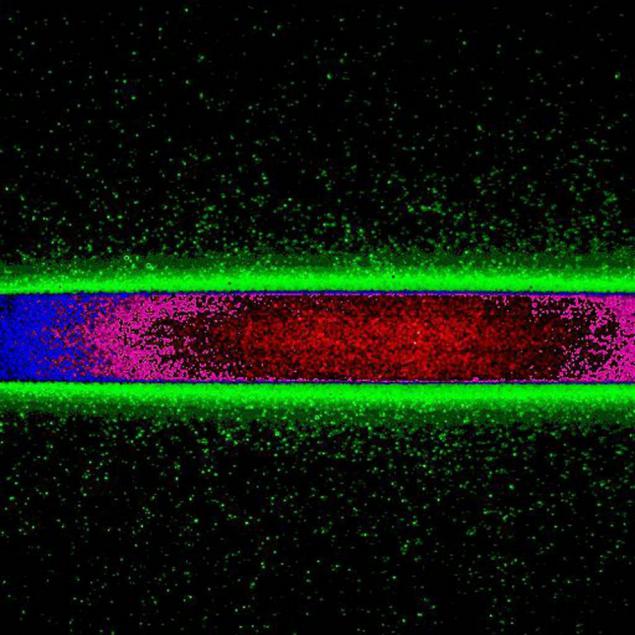
6. It is a spot of light in the shape of a heart - the result of Nick Bax attempts to create an "optical trap" - tightly focused laser beam that can retain microscopic particles stable in three dimensions. "This beam should be as round, so that after a day of calibration, I realized that this is a round beam that I could get," - said the Bucks. - In the background you can see a drop of quartz, which I unsuccessfully tried to catch in its "optical trap". (Nick Bax / Princeton University Art of Science Competition)
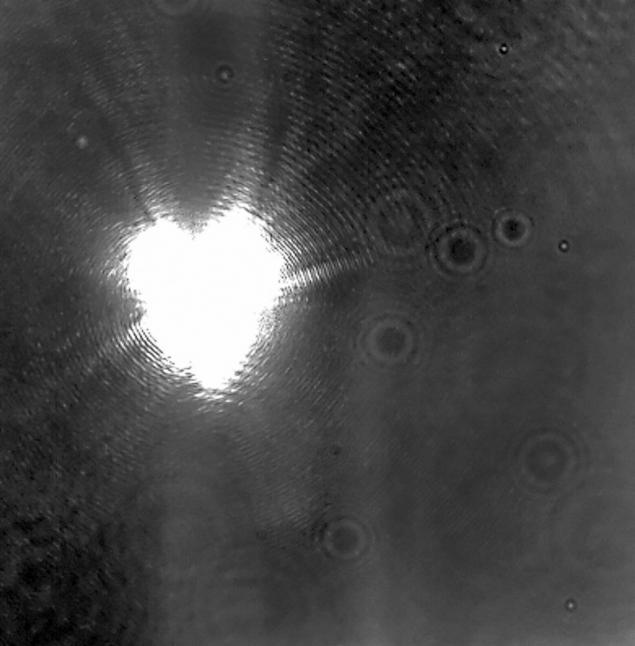
7. In the illustrated transistor in a plastic case, plastic poured into interlaced electrodes which can be seen here as a bright orange bar. These electrodes stream is passed into and out of the active channel (in this case green). The image was taken Kvangseok Lee, Lynn Loo and Philip Chu. (K. Lee, L. Loo, P. Chew / Princeton University Art of Science Competition)
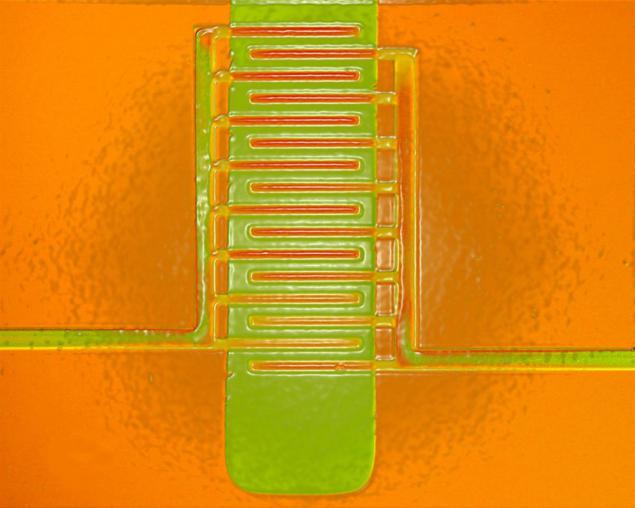
8. Princeton University student Meghan Bellows created this "cartoon" representation peptide (purple) attached to the human leukocyte antigen (gray). Grid on this picture shows the molecular surface of antigen in a certain cohesive "pocket." (Meghan Bellows / Princeton University Art of Science Competition)
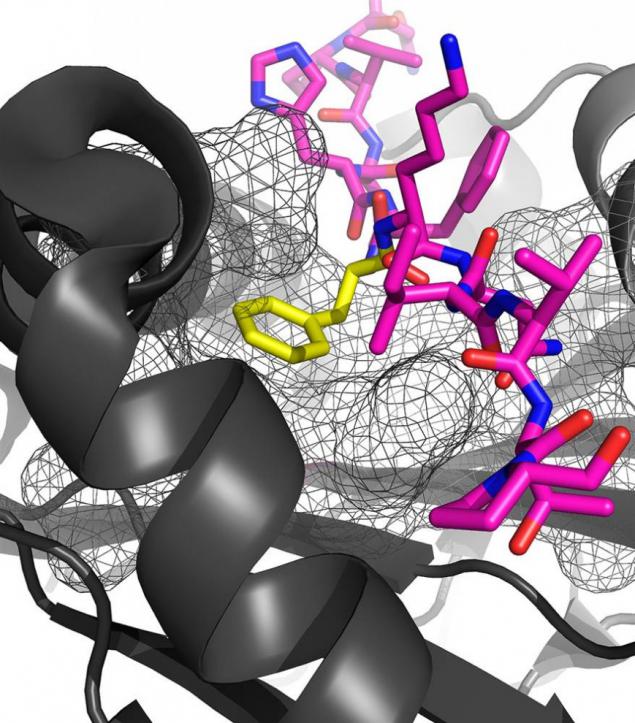
9. In this image made by Dan Left, seen accelerator lithium Lorentz force in one of the recent experiments on the study of acceleration mechanisms of these engines. (Dan Lev / Princeton University Art of Science Competition)
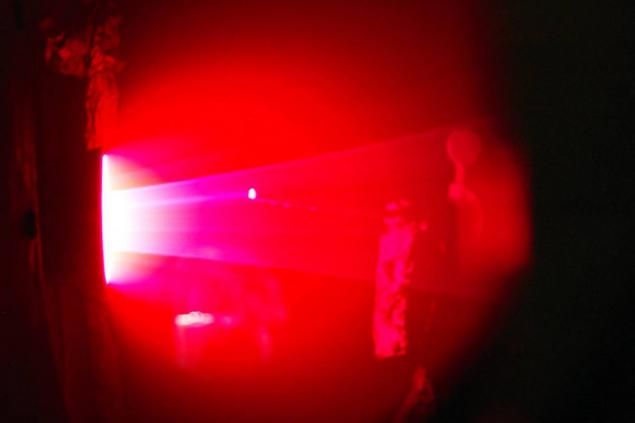
10. It is believed that noise is harmful to transmit signals. Nevertheless, it still has a significant amount of energy that can be useful in certain situations, if it is, of course, proper use. In this experiment, physicists Dmitry Dylov and Jason Fleischer used the "nonlinear" material - which is known to alter the behavior of light in strange ways - to extract the energy from the noise. In this image reviewed the Olympic rings, lubricated noise signals. (D. Dylov, J. Fleisher / Princeton University Art of Science Competition)
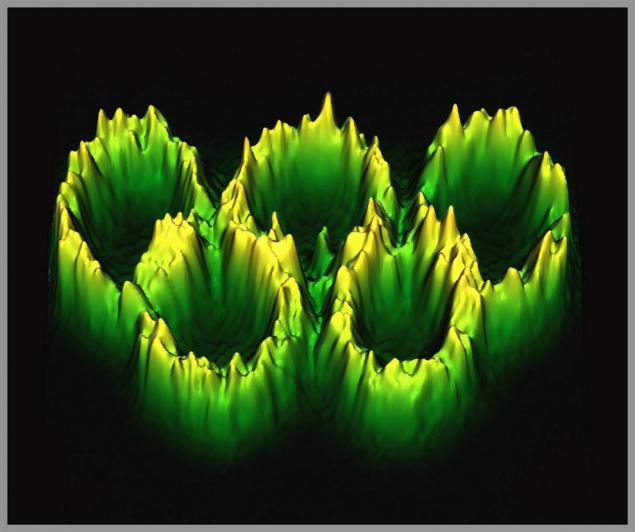
11. floating in highly viscous fluids, cause well-structured flow diagram. These streams appear as a series of thin layers. In this image, the ball is submerged near the exposed surface of the tank filled with silicon oil, which is 5000 times more viscous than water. Authors image - Shelley Chan, Josey Zhnitman and Alexander Smits. (S. Chan, J. Sznitman, A. Smits / Princeton University Art of Science Competition)
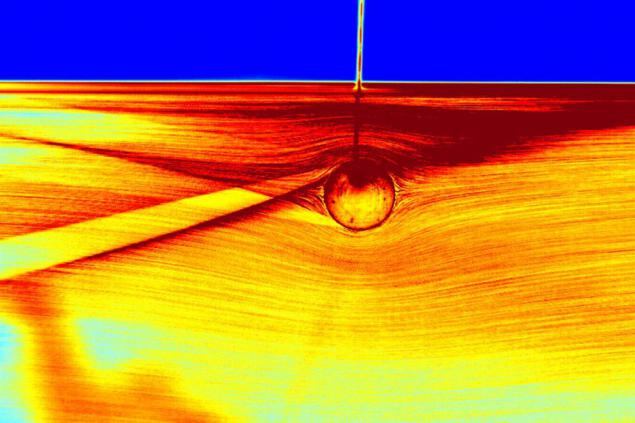
12. In this picture shows a frozen section of mouse eye, which can be seen connective tissue, blood vessels, the white part of the eye and the retina. Green eyes of the rich calcium-binding protein called calretinin. The cell nucleus blue. Round Education - blood vessels. The image was created Praveen Joseph de Saram and Michael J.. Berry II. (P. Saram, M. Berry, II / Princeton University Art of Science Competition)
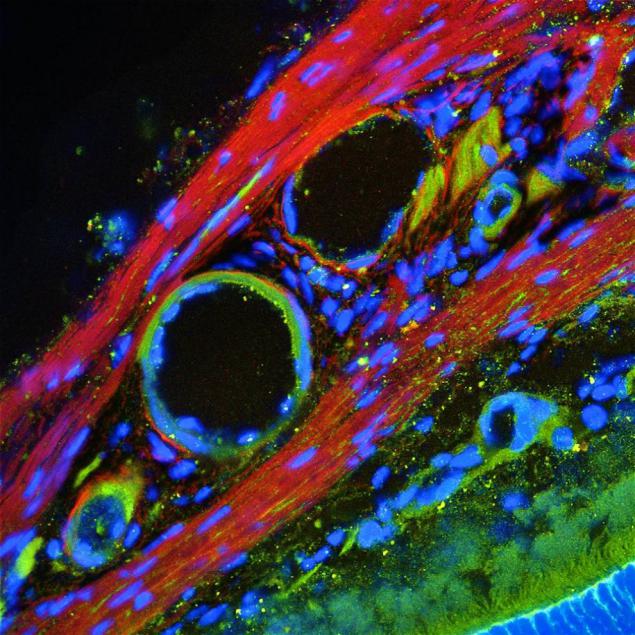
13. David Heinz Study of the effects of surface tension eventually led to the creation of the image of water droplets in contact with the water surface. The picture was taken later to grab the "crown" of water rather than the interaction between the surface tension of the droplet and water. The light pulse lasting only 000-1yu 1/100 seconds, was used to "freeze" the time water droplets splashing. (David Heinz / Princeton University Art of Science Competition)
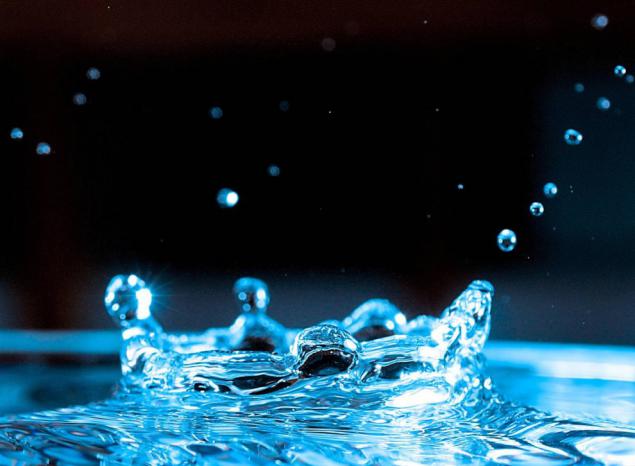
14. The origin of high-energy particle astrophysics is still a mystery. The process, known as "magnetic reconnection", can convert magnetic energy into particle energy. In this process, the magnetic field will be limited by magnetic islands (shown as red bubbles in this image), between which are high-energy particles (yellow dots with tails). Although this image Lorenzo Sironi and Anatoly Spitkovsky has nothing to do with biology, it visually looks like a burst of energy in the cell life. (L. Sironi, A. Spitkovsky / Princeton University Art of Science Competition)
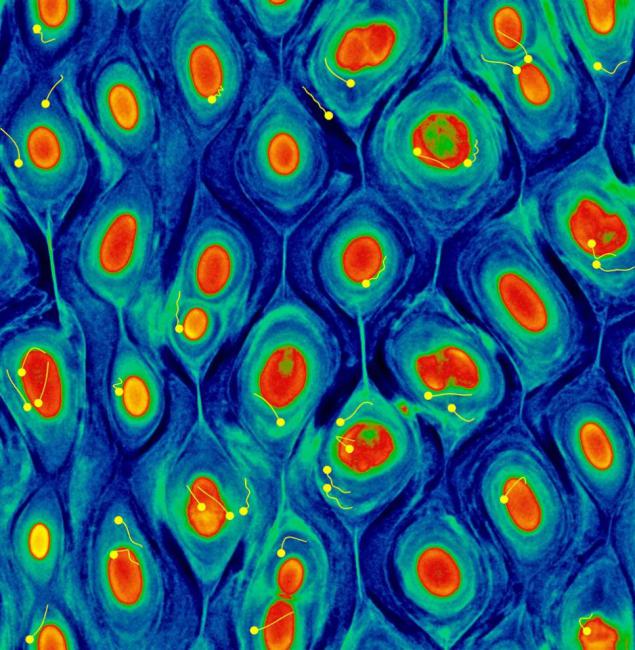
15. This amazing structure of RNA was established during the research student at Princeton University John Bracht about packing RNA. "Perhaps, this image does not convey biologically real structure, but visually it is very interesting," - said Bracht. (John Bracht / Princeton University Art of Science Competition)
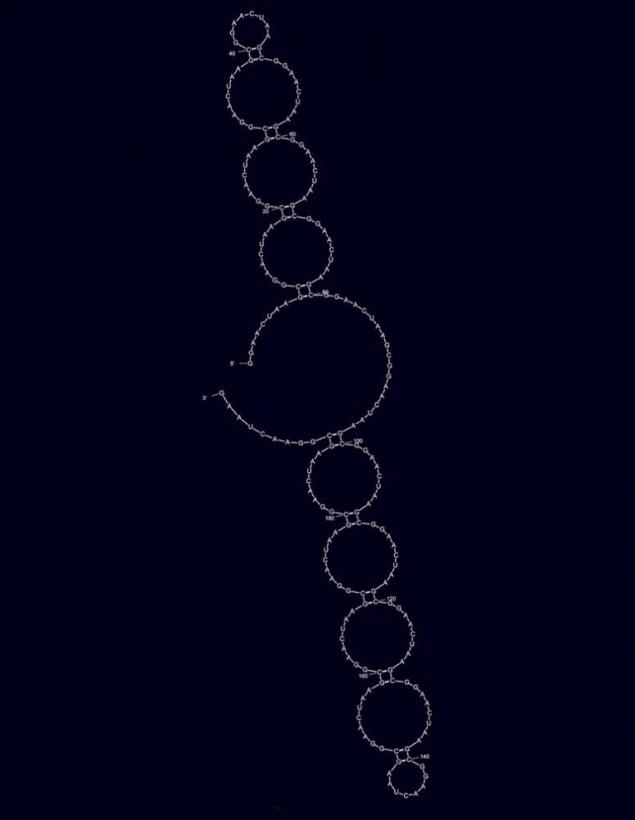
16. This image with a scanning electron microscope shows the marble surface on which the protective layer has accumulated apatite. Acid rain is a threat to the marble buildings, monuments and sculptures, and apatite is more resistant acid exposure than marble. In the laboratory of conservation of works of art at Princeton University, Sonia Naidu and Enrico Sasson explore the use of a protective treatment to the surface, which forms a "forest" of apatite crystals on marble. (S. Naidu, E. Sassoni / Princeton University Art of Science Competition)
Dobavleno1 in [mergetime] 1275806866 [/ mergetime]
3. The third place (and a prize of 95, $ 49) at the contest "The Art of Science" took a student of the Faculty of Physics Tim Kobe for computer simulations of stellar orbits, which he called "Neutron stars scatter a supermassive black hole." The amount of the prizes of the contest is, according to the golden ratio - a mathematical proportion that found in aesthetically pleasing designs - from seashells to ancient Greek temples. (Tim Koby / Princeton University Art of Science Competition)
www.yapfiles.ru/files/101044/3.jpg
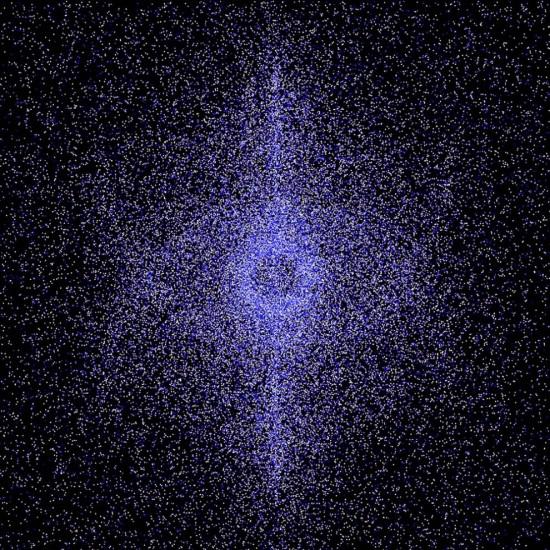
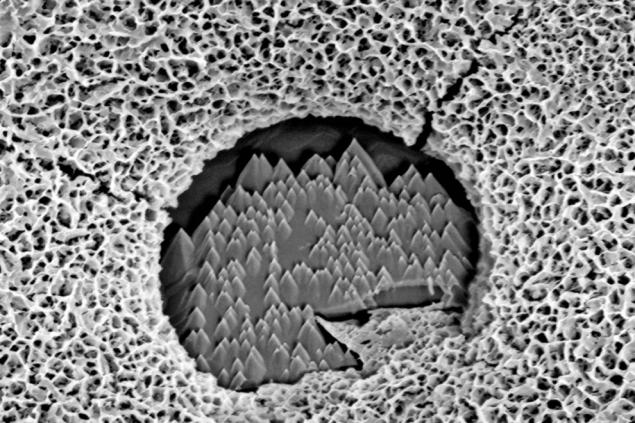
Source:
16 photo + letter
1. The first place and a prize of $ 250 was gone, Jerry Ross - the researcher laboratory of Princeton - for his portrayal of "Xenon Plasma Accelerator." In this photo visible plume of an engine galvanomagnetic effects (Hall effect), which uses electric and magnetic fields for ionization and acceleration of the engine. (Jerry Ross / Princeton University Art of Science Competition)

2. Chemical unit graduate of Princeton University, David Naguib called "therapeutic illumination", took second place, and its author received the prize in the 154, $ 51. This device mimics photosynthesis for the production of drugs and other essential substances. "Our project illustrates the experimental studies using energy-saving compact fluorescent light bulb to produce different color photos catalysts" - says Naguib. (David Nagib / Princeton University Art of Science Competition)

4. This image shows the disordered structure of the material that blocks light over a transparent bandwidth. It also shows the electric field pattern for the electromagnetic waves propagating through the network with a frequency below an unacceptable level. The researchers argue that these materials can be used to collect and convert energy. Authors Image - students at Princeton University Marian Florescu, Paul Steinhardt and Salvatore Torkato. (M. Florescu, P. Steinhardt, S. Torquato / Princeton University Art of Science Competition)

5. Image Craig Jacobson was created as part of the calibration of the spectrometer systems for Thomson scattering on lithium installation "Tokamak" in the laboratory of the university. This diagnostic is used to measure the temperature and density of electrons in the plasma equipment, including the experimental equipment of fusion energy. The colors represent the light intensity. (Craig Jacobson / Princeton University Art of Science Competition)

6. It is a spot of light in the shape of a heart - the result of Nick Bax attempts to create an "optical trap" - tightly focused laser beam that can retain microscopic particles stable in three dimensions. "This beam should be as round, so that after a day of calibration, I realized that this is a round beam that I could get," - said the Bucks. - In the background you can see a drop of quartz, which I unsuccessfully tried to catch in its "optical trap". (Nick Bax / Princeton University Art of Science Competition)

7. In the illustrated transistor in a plastic case, plastic poured into interlaced electrodes which can be seen here as a bright orange bar. These electrodes stream is passed into and out of the active channel (in this case green). The image was taken Kvangseok Lee, Lynn Loo and Philip Chu. (K. Lee, L. Loo, P. Chew / Princeton University Art of Science Competition)

8. Princeton University student Meghan Bellows created this "cartoon" representation peptide (purple) attached to the human leukocyte antigen (gray). Grid on this picture shows the molecular surface of antigen in a certain cohesive "pocket." (Meghan Bellows / Princeton University Art of Science Competition)

9. In this image made by Dan Left, seen accelerator lithium Lorentz force in one of the recent experiments on the study of acceleration mechanisms of these engines. (Dan Lev / Princeton University Art of Science Competition)

10. It is believed that noise is harmful to transmit signals. Nevertheless, it still has a significant amount of energy that can be useful in certain situations, if it is, of course, proper use. In this experiment, physicists Dmitry Dylov and Jason Fleischer used the "nonlinear" material - which is known to alter the behavior of light in strange ways - to extract the energy from the noise. In this image reviewed the Olympic rings, lubricated noise signals. (D. Dylov, J. Fleisher / Princeton University Art of Science Competition)

11. floating in highly viscous fluids, cause well-structured flow diagram. These streams appear as a series of thin layers. In this image, the ball is submerged near the exposed surface of the tank filled with silicon oil, which is 5000 times more viscous than water. Authors image - Shelley Chan, Josey Zhnitman and Alexander Smits. (S. Chan, J. Sznitman, A. Smits / Princeton University Art of Science Competition)

12. In this picture shows a frozen section of mouse eye, which can be seen connective tissue, blood vessels, the white part of the eye and the retina. Green eyes of the rich calcium-binding protein called calretinin. The cell nucleus blue. Round Education - blood vessels. The image was created Praveen Joseph de Saram and Michael J.. Berry II. (P. Saram, M. Berry, II / Princeton University Art of Science Competition)

13. David Heinz Study of the effects of surface tension eventually led to the creation of the image of water droplets in contact with the water surface. The picture was taken later to grab the "crown" of water rather than the interaction between the surface tension of the droplet and water. The light pulse lasting only 000-1yu 1/100 seconds, was used to "freeze" the time water droplets splashing. (David Heinz / Princeton University Art of Science Competition)

14. The origin of high-energy particle astrophysics is still a mystery. The process, known as "magnetic reconnection", can convert magnetic energy into particle energy. In this process, the magnetic field will be limited by magnetic islands (shown as red bubbles in this image), between which are high-energy particles (yellow dots with tails). Although this image Lorenzo Sironi and Anatoly Spitkovsky has nothing to do with biology, it visually looks like a burst of energy in the cell life. (L. Sironi, A. Spitkovsky / Princeton University Art of Science Competition)

15. This amazing structure of RNA was established during the research student at Princeton University John Bracht about packing RNA. "Perhaps, this image does not convey biologically real structure, but visually it is very interesting," - said Bracht. (John Bracht / Princeton University Art of Science Competition)

16. This image with a scanning electron microscope shows the marble surface on which the protective layer has accumulated apatite. Acid rain is a threat to the marble buildings, monuments and sculptures, and apatite is more resistant acid exposure than marble. In the laboratory of conservation of works of art at Princeton University, Sonia Naidu and Enrico Sasson explore the use of a protective treatment to the surface, which forms a "forest" of apatite crystals on marble. (S. Naidu, E. Sassoni / Princeton University Art of Science Competition)
Dobavleno1 in [mergetime] 1275806866 [/ mergetime]
3. The third place (and a prize of 95, $ 49) at the contest "The Art of Science" took a student of the Faculty of Physics Tim Kobe for computer simulations of stellar orbits, which he called "Neutron stars scatter a supermassive black hole." The amount of the prizes of the contest is, according to the golden ratio - a mathematical proportion that found in aesthetically pleasing designs - from seashells to ancient Greek temples. (Tim Koby / Princeton University Art of Science Competition)
www.yapfiles.ru/files/101044/3.jpg


Source:
